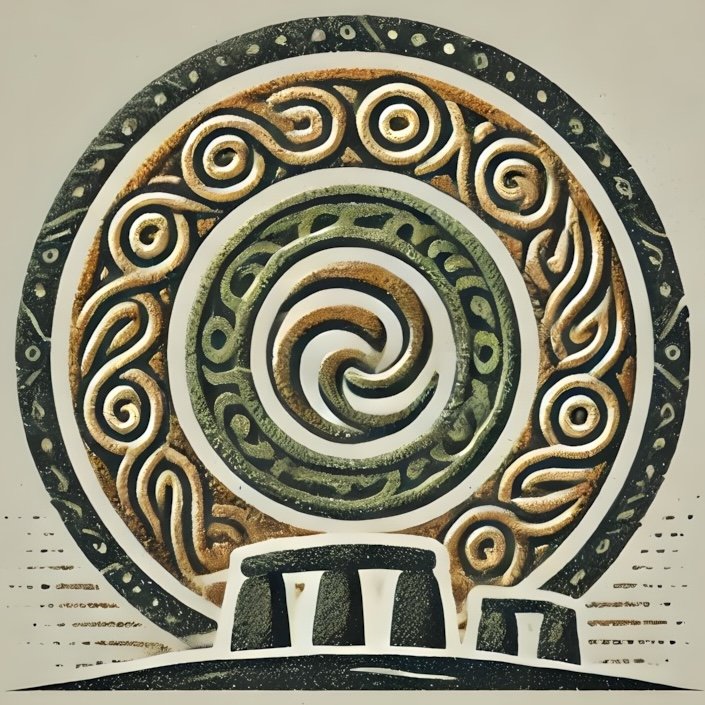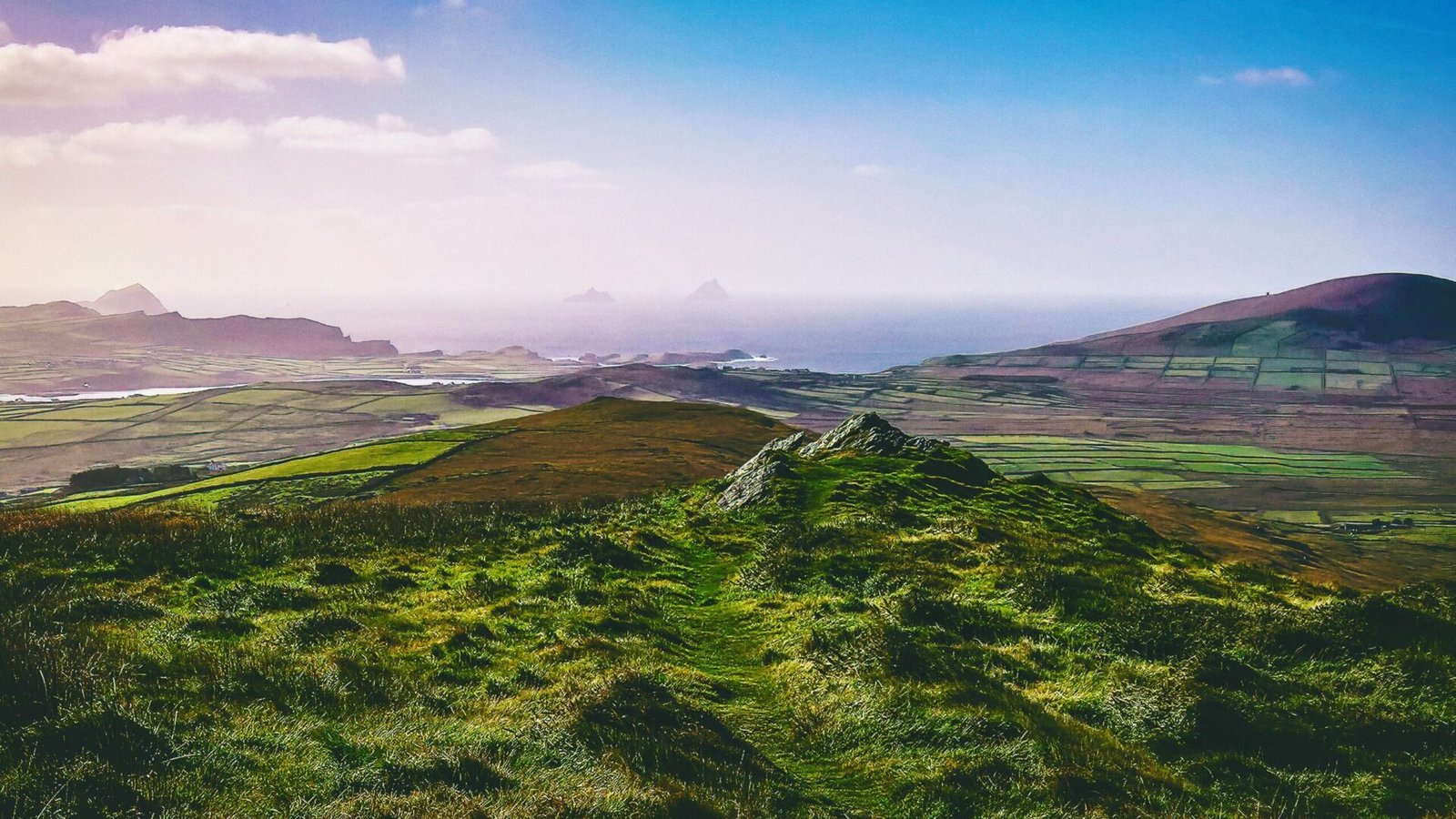The Mesolithic Era, spanning from approximately 8000 to 4000 BCE, marks a transformative period in Irish prehistory. This epoch, often referred to as the Middle Stone Age, was characterized by significant advancements in human ingenuity and adaptation to the environment. As the last Ice Age receded, the landscape of Ireland began to flourish with flora and fauna, providing a rich tapestry for the hunter-gatherer communities that thrived during this time. In this pillar page, we delve into the tools, shelters, and lifestyle of these early inhabitants, while also exploring their connections to Irish mythology and the modern landscape.
Tools of the Mesolithic People
The tools of the Mesolithic era represent a remarkable evolution in human craftsmanship. Unlike the heavy, unwieldy implements of the Paleolithic, Mesolithic tools were typically smaller, more refined, and designed for specific tasks. The most common tools included microliths—small, flint blades that were often set into wooden or bone handles to create composite tools like arrows and harpoons. These microliths were essential for hunting and fishing, reflecting a sophisticated understanding of the natural world.
Archaeological sites such as Mount Sandel in County Londonderry and the Lough Boora site in County Offaly have yielded a wealth of these artifacts. At Mount Sandel, for instance, excavations revealed thousands of microliths alongside evidence of early habitation, showcasing the ingenuity of Mesolithic people in their tool-making practices. The versatility of these tools allowed for efficient hunting of deer, wild boar, and smaller game, as well as fishing in the abundant rivers and lakes.
In addition to microliths, the Mesolithic toolkit included axes, scrapers, and awls, which were integral to woodworking and skinning animals. The development of these tools not only facilitated daily survival but also underscored the growing complexity of social structures, as specialized roles emerged within communities.
Shelters of the Mesolithic Era
As hunter-gatherers, Mesolithic people were highly mobile, often moving in response to seasonal changes and the availability of resources. Their shelters reflected this transient lifestyle. Archaeological evidence suggests that they constructed temporary structures using materials readily available in their environment, such as wood, animal hides, and reeds.
One common type of shelter was the hut, which could be easily assembled and disassembled. These huts were typically circular or oval in shape, with a framework of wooden poles covered with thatch or hides. Sites like the one at Ferriter’s Cove in County Kerry have revealed the remains of such structures, providing insights into the architectural practices of the time.
In addition to huts, Mesolithic people often utilized natural shelters, such as caves and rock overhangs, which provided protection from the elements. The famous cave at Dunmore in County Galway is a testament to this practice, where evidence of human habitation and tool use has been discovered.
Lifestyle of the Mesolithic Inhabitants
The lifestyle of Mesolithic people was intricately connected to their environment. As skilled foragers, they relied on a diverse diet that included wild game, fish, nuts, berries, and edible plants. The rich ecosystems of Ireland, with its forests, rivers, and coastal areas, offered a bountiful supply of food.
Fishing played a crucial role in their sustenance, with evidence of fishing weirs and traps found at various archaeological sites. The use of boats, likely made from hollowed-out tree trunks, enabled them to navigate rivers and coastal waters, expanding their foraging range.
Social structures during the Mesolithic era were likely egalitarian, with small groups or bands working together to gather resources. Seasonal gatherings may have occurred, where different groups came together to share food, trade tools, and engage in social activities. These gatherings would have fostered a sense of community and shared identity among the diverse groups inhabiting the landscape.
Connection to Irish Mythology
The Mesolithic era is often shrouded in mystery, but its legacy can be traced through the rich tapestry of Irish mythology. Many ancient tales and legends echo the lives of these early inhabitants, intertwining their experiences with the cultural narratives that have shaped Ireland’s identity.
One notable connection is found in the myth of the Tuatha Dé Danann, a legendary race of supernatural beings said to have inhabited Ireland before the arrival of the Celts. Some scholars suggest that the Tuatha Dé Danann may have been inspired by the Mesolithic people, reflecting their deep connection to the land and natural world. The reverence for nature, evident in the stories of gods and goddesses associated with rivers, forests, and animals, resonates with the hunter-gatherer lifestyle that characterized the Mesolithic era.
Moreover, many ancient sites, such as the passage tombs at Newgrange and Knowth, are believed to have connections to the rituals and beliefs of these early inhabitants. While these structures were primarily built during the Neolithic period, the traditions and spiritual practices of the Mesolithic people likely laid the groundwork for the later monumental architecture that defines Ireland’s prehistoric landscape.
Key Sites to Visit
Exploring the landscape of Ireland offers a unique opportunity to connect with the Mesolithic past. Here are some key sites that provide insight into this fascinating era:
1. Mount Sandel, County Londonderry: This site is one of the earliest known Mesolithic settlements in Ireland, featuring extensive evidence of habitation and tool-making.
2. Ferriter’s Cove, County Kerry: An important archaeological site where Mesolithic huts and tools have been uncovered, providing a glimpse into the daily lives of these early inhabitants.
3. Lough Boora, County Offaly: This site has yielded a wealth of microliths and other artifacts, showcasing the advanced tool-making techniques of the Mesolithic people.
4. Dunmore Cave, County Galway: A natural shelter that has revealed evidence of human habitation, offering insights into the use of caves by Mesolithic communities.
5. Newgrange, County Meath: While primarily a Neolithic site, the passage tomb at Newgrange is steeped in mythology and reflects the spiritual beliefs that may have originated in the Mesolithic era.
The Mesolithic Era
The Mesolithic era in Ireland represents a pivotal chapter in the story of human development. Through their tools, shelters, and lifestyle, the early inhabitants of Ireland adapted to their environment with remarkable ingenuity. Their connection to the land and the natural world is echoed in the rich mythology that continues to resonate in Irish culture today. Exploring the key sites associated with this era not only deepens our understanding of prehistory but also invites us to appreciate the enduring legacy of those who walked the Irish landscape thousands of years ago.
m

